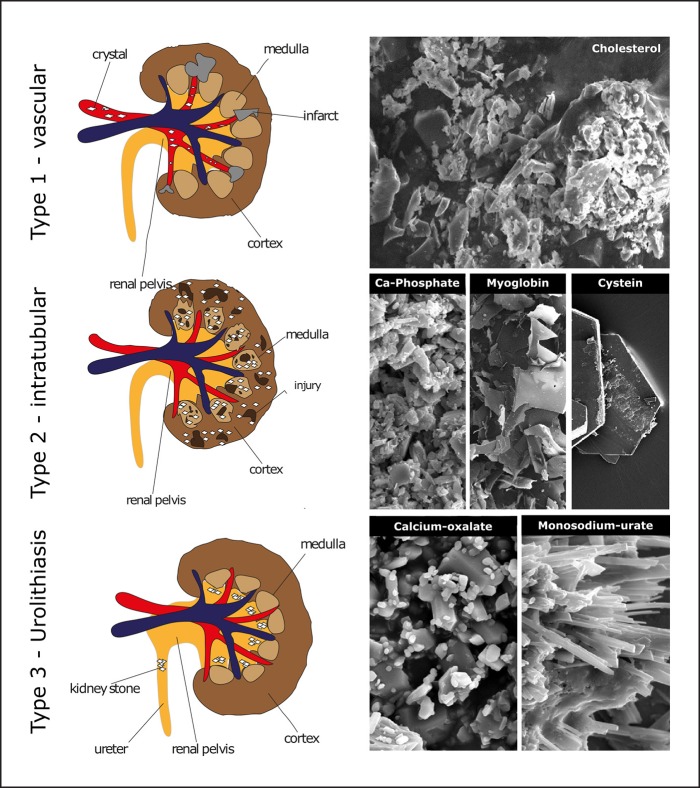Fig. 1.
The three types of crystalline nephropathies. Type 1 causes mostly acute renal infarcts (e.g., cholesterol embolism) or chronic ischemia (e.g., atherosclerotic renal artery stenosis). Type 2 causes mostly tubular injury either directly by inducing necroptosis or apoptosis by tubular cells or indirectly by inducing inflammation or tubular obstruction. Type 3 is represented by urolithiasis that causes either renal colic or chronic obstructive nephropathy. Each of the classes can involve several types of crystals the most prevalent of which are depicted by scanning electron microscopy. Crystal size is usually in the micrometer range except for cysteine, which has larger sizes.

